Utilize this comprehensive nursing care plan and management guide to deliver effective care for patients with lung cancer. Gain valuable insights on nursing assessment, interventions, goals, and nursing diagnoses specifically tailored for lung cancer in this guide.
What is Lung Cancer?
Lung cancer or bronchogenic carcinoma refers to tumors originating in the lung parenchyma or within the bronchi (Munakomi, 2022). Lung cancers are generally divided into two main categories: small-cell lung cancer (SCLC) and non-small-cell lung cancer (NSCLC). NSCLC accounts for approximately 85% of all lung cancers. It is further divided into adenocarcinoma, squamous cell carcinoma, (SCC), and large cell carcinoma. SCLC is considered distinct from other lung cancers because of its clinical and biological characteristics (Tan & Karim, 2021).
Adenocarcinoma is the most common NSCLC cancer in the United States. It arises from the bronchial mucosal glands, a subtype observed most commonly in persons who do not smoke. Squamous cell carcinoma accounts for 25 to 30% of all lung cancers. SCC is found in the central parts of the lung. It is the type most often associated with hypercalcemia. Large cell carcinoma typically manifests as a large peripheral mass on the chest radiograph. This type accounts for 10 to 15% of lung cancers (Tan & Karim, 2022).
Smoking is the most common cause of lung cancer. It is estimated 90% of lung cancer cases are attributable to smoking. It is interesting to note that lung cancer was a relatively rare disease at the beginning of the 20th century. Its dramatic rise in later decades is mainly attributable to the increase in smoking among males and females (Munakomi, 2022).
No specific signs and symptoms exist for lung cancer. Lung cancer symptoms occur due to local effects of the tumor, such as cough due to bronchial compression by the tumor due to distant metastasis, stroke-like symptoms secondary to brain metastasis, paraneoplastic syndrome, and kidney stones due to persistent hypercalcemia (Munakomi, 2022).
Nursing Care Plans & Management
Nursing care for patients with lung cancer encompasses both physiological and psychological aspects, similar to other cancer patients. The focus is on addressing the respiratory manifestations of the disease, along with providing pain relief, managing discomfort, and preventing complications. Strategies are implemented to meet the patient’s needs and ensure their overall well-being.
Nursing Problem Priorities
The following are the nursing priorities for patients with lung cancer:
- Relieving breathing problems
- Managing symptoms of lung cancer
- Reducing fatigue
- Providing emotional support
- Patient education and health teachings
Nursing Assessment
Assess for the following subjective and objective data:
- Dyspnea
- Restlessness/changes in mentation
- Hypoxemia and hypercapnia
- Cyanosis
- Changes in rate/depth of respiration
- Abnormal breath sounds
- Ineffective cough
- Dyspnea
Assess for factors related to the cause of lung cancer:
- Increased amount/viscosity of secretions
- Restricted chest movement/pain
- Fatigue/weakness
- Surgical incision, tissue trauma, and disruption of intercostal nerves
- Presence of chest tube(s)
- Cancer invasion of the pleura, chest wall
Nursing Diagnosis
Following a thorough assessment, a nursing diagnosis is formulated to specifically address the challenges associated with lung cancer based on the nurse’s clinical judgement and understanding of the patient’s unique health condition. While nursing diagnoses serve as a framework for organizing care, their usefulness may vary in different clinical situations. In real-life clinical settings, it is important to note that the use of specific nursing diagnostic labels may not be as prominent or commonly utilized as other components of the care plan. It is ultimately the nurse’s clinical expertise and judgment that shape the care plan to meet the unique needs of each patient, prioritizing their health concerns and priorities.
Nursing Goals
Goals and expected outcomes may include:
- The client will demonstrate improved ventilation and adequate oxygenation of tissues by ABGs within the normal range.
- The client will be free of symptoms of respiratory distress.
- The client will maintain a patent airway with clear breath sounds.
- The client will clear secretions and be free of aspiration.
- The client will report pain relief/control.
- The client will appear relaxed and sleep/rest appropriately.
- The client will participate in desired/needed activities.
Nursing Interventions and Actions
Nursing interventions for patients with lung cancer encompass pain management, respiratory support, symptom management, psychological support, education and health promotion, nutritional support, collaboration and coordination, end-of-life care, and supportive care. These interventions aim to address the physiological and psychological needs of the patients, optimize their comfort, manage symptoms, provide education and support, and enhance their overall well-being throughout their journey with lung cancer. Therapeutic interventions and nursing actions for patients with lung cancer may include:
1. Improving Gas Exchange
Centrally located obstructing tumors can cause the collapse of the entire lung with an absence of breath sounds on the side of the lesion. Rapid tumor growth may lead to obstruction of major airways, with distal collapse leading to post-obstructive pneumonia, infection, and fever (Tan & Karim, 2021).
Note respiratory rate, depth, and ease of respiration. Note the use of accessory muscles and pursed-lip breathing.
Respirations may be increased as a result of pain or as an initial compensatory mechanism to accommodate for the loss of lung tissue. Additionally, respiratory insufficiency is signaled by dyspnea and increased work of breathing, retractions, orthopnea, and cyanosis. In SCLC, clients usually experience shortness of breath; physical examination may reveal the use of the accessory muscles of respiration and nasal flaring (Tan & Karim, 2021).
Observe changes in skin or mucous membrane color, pallor, cyanosis, and edema.
Increased work of breathing and cyanosis may indicate increasing oxygen consumption, energy expenditures, and reduced respiratory reserve. Examination of the extremities may reveal clubbing, cyanosis, or edema. In the presence of superior vena cava (SVC) obstruction, the right upper extremity is usually edematous (Tan & Karim, 2021).
Auscultate lungs for air movement and abnormal breath sounds.
Consolidation and lack of air movement on the operative side are normal in the pneumonectomy client; however, the lobectomy client should demonstrate normal airflow in the remaining lobes. In clients diagnosed with NSCLC, upper airway obstruction is manifested by stridor and wheezing. Lower airway obstruction is manifested by asymmetric breath sounds, pleural effusion, pneumothorax, infiltrates, and post-obstructive processes (Tan & Karim, 2022).
Investigate restlessness and changes in mentation or level of consciousness.
A neurologic examination should be performed to assess for focal neurological deficits caused by brain metastases and for signs of spinal cord compression (Tan & Karim, 2022). This may also indicate increased hypoxia or complications such as a mediastinal shift in the pneumonectomy client when accompanied by tachypnea, tachycardia, and tracheal deviation.
Assess the client’s response to the activity.
Increased oxygen consumption demand and stress of surgery can result in increased dyspnea and changes in vital signs with activity; however, early mobilization is desired to help prevent pulmonary complications and to obtain and maintain respiratory and circulatory efficiency.
Note the development of fever.
Fever within the first 24 hours after surgery is frequently due to atelectasis. Temperature elevation within the 5th to 10th postoperative day usually indicates a wound or systemic infection.
Assess for cough and mucus production, hemoptysis, and chest pain.
Cough is present in 50 to 75% of clients diagnosed with lung cancer. Cough productive of large volumes of thin, mucoid secretions is seen in mucinous adenocarcinoma. In some cases, especially those with exophytic bronchial masses, a cough may signify secondary post-obstructive pneumonia. Hemoptysis is present in 15 to 30% of clients with lung cancer. Chest pain is present in approximately 20 to 40% of clients (Munakomi, 2022).
Monitor and graph ABGs, and pulse oximetry readings. Note hemoglobin (Hb) levels.
Decreasing Pao2 or increasing Pco2 may indicate the need for ventilatory support. Significant blood loss can result in decreased oxygen-carrying capacity, reducing Pao2. Arterial blood gas (ABG) levels are useful in the detection of respiratory failure in sick clients. Obtain ABG levels in clients with active systemic diseases or abnormal labored breathing (Tan & Karim, 2022).
Monitor chest radiography results and other imaging tests as indicated.
A chest radiograph is usually the first test ordered in clients in whom a lung malignancy is suggested. Clues from the chest radiograph may suggest the diagnosis of lung cancer, but may not be helpful in identifying a histologic subtype. A chest CT scan is a standard for lung cancer staging. The findings of CT scans of the chest and clinical presentation usually allow a presumptive differentiation between NSCLC and SCLC (Tan & Karim, 2022).
Encourage rest periods and limit activities according to client tolerance.
Adequate rest balanced with activity can prevent respiratory compromise. The client’s activity level, as measured by a performance status scale is an important prognostic factor. The client should be encouraged to remain active during and after treatment for lung cancer (Tan & Karim, 2022).
Educate regarding smoking cessation.
Advise clients that smoking cessation is the most important measure for preventing lung cancer; it may also improve prognosis in clients with early-stage lung cancer. Smoking cessation by others who share the client’s home, car, or both is also important. According to published data, the use of nicotine alternatives instead of cigarettes reduces the incidence of lung cancer, although it does not affect the incidence of ischemic heart disease (Tan & Karim, 2022).
Maintain patent airway by positioning, suctioning, and use of airway adjuncts.
Airway obstruction impedes ventilation, impairing gas exchange. In the case of upper airway obstruction, the client is admitted to the ICU, and prepared for intubation and/or cricothyrotomy and intraoperative tracheostomy (Tan & Karim, 2022).
Reposition frequently, placing the client in sitting positions and supine to side positions. However, avoid positioning the client with a pneumonectomy on the operative side; instead, favor the “good lung down” position.
This maximizes lung expansion and drainage of secretions. Research shows that positioning clients following lung surgery with their “good lung down” maximizes oxygenation by using gravity to enhance blood flow to the healthy lung, thus creating the best possible match between ventilation and perfusion (Lan et al., 2011).
Encourage and assist with deep-breathing exercises and pursed-lip breathing as appropriate.
This promotes maximal ventilation and oxygenation and reduces or prevents atelectasis. Breathing exercises aim to correct breathing errors, reestablish proper breathing patterns, increase diaphragm activity, elevate the amount of alveolar ventilation, reduce energy consumption when breathing, and relieve the shortness of breath experienced by clients diagnosed with lung cancer (Liu et al., 2013).
Maintain patency of the chest drainage system for lobectomy, segmental, or wedge resection.
These drain fluid from the pleural cavity to promote the re-expansion of remaining lung segments. The balanced chest drainage system was found to be associated with reduced rates of post-pneumonectomy pulmonary edema, which is a common cause of death after pneumonectomy (Wei Lo et al., 2020).
Note changes in the amount or type of chest tube drainage.
Bloody drainage should decrease in amount and change to a more serous composition as recovery progresses. A sudden increase in the amount of bloody drainage or return to frank bleeding suggests thoracic bleeding or hemothorax; sudden cessation suggests blockage of the tube, requiring further evaluation and intervention.
Observe the presence or degree of bubbling in the water-seal chamber.
Air leaks immediately postoperative are not uncommon, especially following lobectomy or segmental resection; however, this should diminish as healing progresses. Most intrathoracic air leaks will usually seal spontaneously, and resolution can be tracked by witnessing decreased bubbling in the device over days. Prolonged or new leaks require evaluation to identify problems in clients versus the drainage system (Merkle & Cindass, 2022).
Administer supplemental oxygen via nasal cannula, partial rebreathing mask, or high-humidity face mask, as indicated.
This maximizes available oxygen, especially while ventilation is reduced because of anesthetic, depression, or pain, and during the period of the compensatory physiological shift of circulation to remaining functional alveolar units. If hemoptysis is noted, administer supplemental oxygen and perform suctioning. If a threat of imminent demise exists, consider placing a double-lumen endotracheal tube (Tan & Karim, 2022).
Assist with and encourage the use of incentive spirometer.
This prevents or reduces atelectasis and promotes the re-expansion of small airways. Lung expansion therapy allows the client to maintain an effective cough mechanism to facilitate the removal of secretions from the airways following surgery. An incentive spirometer is a medical device, which helps the client sustain maximal inspiration under visual quantitation by inspiratory effort (Liu et al., 2019).
2. Managing Pain and Discomfort
Pain is one of the most prevalent symptoms in clients diagnosed with lung cancer; it can arise from local invasion of chest structures or metastatic disease invading bones, nerves, or other anatomical structures that are potentially painful. Pain can also be a consequence of therapeutic approaches like surgery, chemotherapy, or radiotherapy (Hochberg et al., 2017).
Ask the client about pain. Determine pain characteristics: continuous, aching, stabbing, burning. Have the client rate intensity on a 0–10 scale.
Identifying the level of pain is helpful in evaluating cancer-related pain symptoms, which may involve viscera, nerve, or bone tissue. The use of a rating scale aids the client in assessing the level of pain and provides a tool for evaluating the effectiveness of analgesics, enhancing the client’s control of pain. Acute cancer pain is usually due to a definable acute injury or illness. Chronic cancer pain can result from the same causes as acute pain but is differentiated by longevity (Simmons et al., 2012).
Assess the client’s verbal and nonverbal pain cues.
The discrepancy between verbal and/or nonverbal cues may provide clues to the degree of pain, need for, or effectiveness of interventions. Acute pain is associated with clinical signs of sympathetic overactivity such as tachycardia, hypertension, sweating, pupillary dilatation, and pallor (Simmons et al., 2012).
Note possible pathophysiological and psychological causes of pain.
Fear, distress, anxiety, and grief over the confirmed diagnosis of cancer can impair the ability to cope. In addition, a posterolateral incision is more uncomfortable for the client than an anterolateral incision. The presence of chest tubes can greatly increase discomfort. The three main causes of pain in clients diagnosed with advanced lung cancer are skeletal metastatic disease (34%), Pancoast tumor (31%), and chest wall disease (21%) (Simmons et al., 2012).
Evaluate the effectiveness of pain control. Encourage sufficient medication to manage pain; change medication or time span as appropriate.
Pain perception and pain relief are subjective, thus pain management is best left to the client’s discretion. If the client cannot provide verbal input, the nurse should observe physiological and nonverbal signs of pain and administer medications regularly. Undertreated cancer pain associates physical and psychological consequences, causing suffering and reduced quality of life (Hochberg et al., 2017).
Assess the client’s understanding of the evaluation and pain relief strategies.
This review helps determine the client’s level of understanding and reinforces findings, thereby promoting knowledge and adherence to pain relief strategies. It also empowers the client as much as possible to participate in controlling their pain.
Assess the client’s cultural beliefs and attitudes about pain. Never ignore a client’s report of pain.
Cultural beliefs may influence how individuals describe their pain and its severity and their willingness to ask for pain medications. Pain is dynamic, and competent management requires frequent assessment at scheduled intervals.
Assess the client’s and caregiver’s attitudes and knowledge about the pain medication regimen.
Many clients and their families have fears related to the client’s ultimate addiction to opioids. It is important to dispel any misperceptions about opioid-induced addiction when chronic pain therapy is necessary. Fears of addiction may result in ineffective pain management.
Encourage verbalization of feelings about the pain.
Fears or concerns can increase muscle tension and lower the threshold of pain perception. An interesting finding from studies with cancer clients shows a low mean score on the client’s knowledge and attitudes toward cancer pain management. This result may be explained by the fact that many clients could be reluctant to report their pain to professionals because they have a mistaken belief regarding opioid medication (Makhlouf et al., 2019).
Provide comfort measures: frequent changes of position, back rubs, and support with pillows. Encourage the use of relaxation techniques, visualization, guided imagery, and appropriate diversional activities.
Nonpharmacological management of pain also promotes relaxation and redirects attention. They may relieve discomfort and augment the therapeutic effects of analgesia. Nonpharmacologic approaches such as acupressure, biofeedback, application of heat or cold, and massage are often effective in enhancing the effects of opioid therapy.
Schedule rest periods, and provide a quiet environment.
Providing the client with rest periods decreases fatigue and conserves energy, enhancing coping abilities. A quiet environment decreases external stimuli, which can aggravate anxiety and limit the client’s coping abilities and adjustment to the current situation.
Assist with self-care activities, breathing and/or arm exercises, and ambulation.
This prevents undue fatigue and incisional strain. Encouragement and physical assistance and support may be needed for some time before the client is able or confident enough to perform these activities because of pain or fear of pain. Caregivers with a higher pain management knowledge have significantly fewer barriers to cancer pain management, therefore, they should have a general awareness and adequate level of knowledge to be able to assist the client with daily activities (Makhlouf et al., 2019).
Assist with patient-controlled analgesia (PCA) or analgesia through the epidural catheter.
Maintaining a constant drug level avoids cyclic periods of pain, aids in muscle healing, and improves respiratory function and emotional comfort, and coping. The goal of PCA is to efficiently deliver pain relief at a client’s preferred dose and schedule by allowing them to administer a predetermined bolus dose of medication on-demand at the press of a button. PCA has proven to be more effective at pain control than non-patient opioid injections and results in higher client satisfaction, especially in clients who are unable to tolerate oral medications (Chen et al., 2022).
Administer intermittent analgesics routinely as indicated, especially 45–60 min before respiratory treatments, deep-breathing, or coughing exercises.
The World Health Organization’s (WHO) Analgesic Ladder for Cancer Pain Relief provides a stepwise approach to managing pain in clients diagnosed with cancer. Step 1 advises the use of paracetamol or a nonsteroidal anti-inflammatory drug. If the client is not satisfactorily controlled, it is appropriate to move to Step 2 Analgesia which includes the use of weak opioids, usually codeine. Morphine is the usual first-line Step 3 opioid, however, there are many alternatives to morphine nowadays (Simmons et al., 2012).
Recognize and report/treat side effects of opioid analgesia early.
Side effects include respiratory depression, nausea and vomiting, constipation, sedation, and itching. The presence of these side effects does not necessarily preclude continued use of the drug. Consult with the care provider regarding the prophylactic use of stool softeners to prevent constipation.
Avoid stopping opioids abruptly in clients who have been taking them for a prolonged period.
There is potential for physical dependence in clients taking opioids for a prolonged period; therefore, they should be tapered gradually to prevent withdrawal discomfort. Morphine, like other strong opioids, is titrated until the desired analgesic benefit is achieved (Simmons et al., 2012).
Educate the client and SOs about complementary therapies for pain management.
Complementary therapies are used as adjuncts to current evidence-based management. They are supportive measures that assist in symptom control, enhance well-being, and contribute to overall client care. However, it is important to evaluate herbal and other dietary products for side effects and potential interactions with chemotherapy and other medications (Simmons et al., 2012).
Provide additional information about interventional pain medicine.
Interventional pain management is a subspecialty of medicine devoted to the use of invasive techniques such as joint injections, nerve blocks and/or neurolysis, neuromodulation, and cement augmentation techniques to provide diagnosis and treatment of pain syndromes being unresponsive to conventional medical management. Several interventional cancer pain procedures have demonstrated effectiveness in relieving drug-resistant cancer pain symptoms, yet the evidence is scant (Hochberg et al., 2017).
3. Maintaining Patent Airway Clearance
Lung cancer may narrow the airway, causing wheezing. If a tumor blocks an airway, part of the lung that the airway supplies may collapse, a condition called atelectasis. Other consequences of a blocked airway are shortness of breath and pneumonia, which may result in coughing, fever, and chest pain (Keith, 2022).
Auscultate the chest for the character of breath sounds and the presence of secretions.
Noisy respirations, rhonchi, and wheezes indicate retained secretions or airway obstruction. Centrally located obstructing tumors can cause the collapse of the entire lung with an absence of breath sounds on the side of the lesion. Upper airway obstruction is manifested by stridor and wheezing. Lower airway obstruction is manifested by asymmetric breath sounds (Tan & Karim, 2022).
Observe the amount and character of sputum or aspirated secretions. Investigate changes as indicated.
Increased amounts of colorless, blood-streaked, or watery secretions are normal initially and should decrease as recovery progress. The presence of thick or tenacious, bloody, or purulent sputum suggests the development of secondary problems (dehydration, pulmonary edema, local hemorrhage, or infection) that require correction and treatment.
Assess for pain or discomfort and medicate on a routine basis and before breathing exercises.
Most peripheral tumors are adenocarcinomas or large cell carcinomas and, in addition to causing cough and dyspnea, can cause severe pain as a result of infiltration of the parietal pleura and the chest wall (Tan & Karim, 2022). Pre-medication encourages the client to move, cough more effectively, and breathe more deeply to prevent respiratory insufficiency.
Assess the rate and depth of respirations and chest movement.
Dyspnea is prominent in clients early in their disease. Causes of dyspnea may include tumor occlusion of the airway or lung parenchyma, pleural effusion, pneumonia, or complications of treatment. Tachypnea, shallow respirations, and asymmetric chest movements are frequently present because of the discomfort of moving chest wall or fluid in the lung.
Observe for the characteristics of cough.
The most frequent symptom of lung cancer is a cough or a change in a chronic cough. People frequently ignore this symptom and attribute it to smoking or a respiratory infection. The cough may start as a dry, persistent cough, without sputum production. When obstruction of the airways occurs, the cough may become productive due to infection.
Monitor serial ABGs and chest X-rays.
Arterial blood gas (ABG) levels are useful in the detection of respiratory failure. It is obtained in clients with active systemic diseases or abnormal labored breathing. A chest radiography is usually the first test ordered in clients in whom a lung malignancy is suggested. Clues from the chest radiograph may suggest the diagnosis of lung cancer. If the tumor is clearly visible and measurable, chest radiography can sometimes be used to monitor response to therapy (Tan & Karim, 2022).
Elevate the client’s head of the bed and change positions frequently.
Keeping the head of the bed elevated lowers the diaphragm, promoting chest expansion, aeration of lung segments, and mobilization and expectoration of secretions to keep the airway clear.
Assist the client and instruct effective deep breathing and coughing with an upright position (sitting) and splinting of an incision.
Upright position favors maximal lung expansion and splinting improving the force of cough effort to mobilize and remove secretions. Splinting may be done by the nurse (placing hands anteriorly and posteriorly over the chest wall) and by the client (with pillows) as strength improves. In their simplest form, breathing exercises consist of elongating and slowing down the inhalation and exhalation, which allow lung cancer clients to take deeper breaths that increase their intake of oxygen, rather than taking shallow breaths that only make use of the top half of their lungs (Liu et al., 2019).
Suction if cough is weak or breath sounds not cleared by cough effort. Suction the client as needed, and encourage them to begin deep breathing and coughing as soon as possible.
“Routine” suctioning increases the risk of hypoxemia and mucosal damage. Deep tracheal suctioning is generally contraindicated following pneumonectomy to reduce the risk of rupture of the bronchial stump suture line. Avoid deep endotracheal or nasotracheal suctioning in pneumonectomy clients if possible. If suctioning is unavoidable, it should be done gently and only to induce effective coughing. Suctioning can stimulate the vagal nerve, predisposing the client to bradycardia and hypoxia. Hypoxia can be profound from occlusion interruption of oxygen supply, and prolonged suctioning (Sinha et al., 2022).
Encourage oral fluid intake (at least 2500 mL/day) within cardiac tolerance.
Adequate hydration aids in keeping secretions loose or enhances expectoration. Using warm liquids may decrease bronchospasm. Fluid during meals can increase gastric distention and pressure on the diaphragm.
Assist with an incentive spirometer, postural drainage, and percussion as indicated.
These techniques improve lung expansion or ventilation and removal of secretions. Postural drainage may be contraindicated in some clients and in any event, must be performed cautiously to prevent respiratory embarrassment and incisional discomfort. Airway clearance techniques are key to maintaining airway patency through the removal of excess secretions. This may be accomplished through deep-breathing exercises, chest physiotherapy, directed cough, suctioning, and in some instances bronchoscopy.
Use humidified oxygen and/or ultrasonic nebulizer. Provide additional fluids via IV as indicated.
Providing maximal hydration helps loosen or liquefy secretions to promote expectoration. Impaired oral intake necessitates IV supplementation to maintain hydration. Oxygen is commonly prescribed for lung cancer clients with advanced disease. Indications include hypoxemia and dyspnea. Reversal of hypoxemia in some cases will alleviate dyspnea (Tiep et al., 2013).
4. Administering Medications and Pharmacological Support
Bronchodilators
Bronchodilators relieve bronchospasm to improve airflow. As the tumor enlarges or spreads, it may compress a bronchus or involve a large area of lung tissue, resulting in impaired breathing patterns and poor gas exchange.
Expectorants
Expectorants increase mucus production and liquefy and reduce the viscosity of secretions, facilitating removal. They exert their effect on the mucus layer lining the respiratory tract with the motive of enhancing its clearance (Gupta & Wadhwa, 2022).
Analgesics
Alleviation of chest discomfort promotes cooperation with breathing exercises and enhances the effectiveness of respiratory therapies. The World Health Organization’s (WHO) Analgesic Ladder for Cancer Pain Relief provides a stepwise approach to managing pain in clients diagnosed with cancer. Step 1 advises the use of paracetamol or a nonsteroidal anti-inflammatory drug. If the pain is not satisfactorily controlled, it is appropriate to move to step 2 analgesia which includes the use of weak opioids, usually codeine. Clients with severe pain usually need step 3 analgesia, the use of strong opioids (Simmons et al., 2012).
5. Reducing Fear and Anxiety
Psychological distress is also related to the symptoms of clients diagnosed with cancer and consequently, psychological support and care must be integral to the client’s treatment. Untreated psychological distress may exacerbate pain or other symptoms. It is therefore important to ensure clients have access to counseling and spiritual support (Simmons et al., 2012).
Evaluate the client’s and significant other‘s (SO) level of understanding of the diagnosis.
The client and SO are hearing and assimilating new information that includes changes in self-image and lifestyle. Understanding the perceptions of those involved sets the tone for individualizing care and provides information necessary for choosing appropriate interventions.
Assess the client’s anxiety levels in association with the COVID-19 pandemic.
Cancer clients represent an already compromised group known to have elevated levels of fear and anxiety, and the introduction of the pandemic places this vulnerable population at an even higher risk for mental health consequences (Albano et al., 2021).
Assess mental status, including mood and affect, comprehension of events, and content of thoughts, such as illusions or manifestations of terror or panic.
Initially, the client may use denial and repression to reduce and filter information that might be overwhelming. Some clients display a calm manner and alert mental status, representing dissociation from reality, which is also a protective mechanism.
Identify previous methods of coping with and handling stressful situations.
Past successful behavior can be used to assist in dealing with the present situation. Coping style is considered to be potentially related to psychological distress, and the association between coping style and psychological distress has been demonstrated (Tian et al., 2021).
Acknowledge the reality of the client’s fears or concerns and encourage the expression of feelings.
Support may enable the client to begin exploring and dealing with the reality of cancer and its treatment. The client may need time to identify feelings and even more time to begin to express them. Provide an open environment in which the client feels safe to discuss their feelings and help them feel accepted in their present condition. This may promote a sense of dignity and control.
Provide an opportunity for questions and answer them honestly. Be sure that the client and care providers have the same understanding of the terms used.
This establishes trust and reduces misperceptions and/or misinterpretation of information Providing the client with accurate and consistent information can reduce anxiety and enable the client to make decisions and choices based on realities.
Accept, but do not reinforce, the client’s denial of the situation.
When extreme denial or anxiety is interfering with the progress of recovery, the issues facing the client need to be explained and resolutions explored. Previous studies have shown that women with advanced cancer applied denial or avoidance to cope with their disease. Increasing denial or escape-avoidance coping has been associated with a high level of emotional distress (Liao et al., 2018).
Note comments or behaviors indicative of beginning acceptance and/or use of effective strategies to deal with the situation.
Fear and/or anxiety will diminish as the client begins to accept or deal positively with reality. An indicator of the client’s readiness to accept responsibility for participation in recovery and to “resume life.” Evidence indicated that clients with a high level of positive attitude might have more expectations and confidence in addressing adverse challenges and vice versa (Tian et al., 2021).
Involve the client and SO in care planning. Provide time to prepare for events or treatments.
This may help restore some feeling of control or independence to the client who feels powerless in dealing with diagnosis and treatment. Social support has been identified as a buffering or protective source of distress and psychosocial adjustment (Tian et al., 2021).
Provide for the client’s physical comfort.
It is difficult to deal with emotional issues when experiencing extreme or persistent physical discomfort. In a study, clients and caregivers described physical strategies for coping with anxiety including exercise, meditation, slow breathing, and other forms of focused relaxation. Exercise to alleviate anxiety was usually pursued separately by clients and caregivers due to differing degrees of health and energy, but they also practiced other forms of relaxation together such as meditation and going for walks (Hendriksen et al., 2019).
Identify manifestations of anxiety and coping strategies to alleviate them.
- Cognitive
Cognitive manifestations of anxiety are present in both clients and caregivers. Some of the methods used by clients and caregivers in a study include waiting it out using visualization strategies, using mindfulness, or engaging in activities (Hendriksen et al., 2019). - Behavioral
The first behavioral manifestation of anxiety concerns exertion. Some clients respond by becoming behaviorally cautious; they feel fragile or endangered and act in accordance. To cope with these manifestations, clients and caregivers sought support from others. They may connect with friends or can find respite by pursuing activities with others or making use of mental health care resources (Hendriksen et al., 2019). - Physiological
Physiological manifestations and strategies for coping with anxiety are separate from behavioral ones as they focus on the physical body. Clients and caregivers may report impairing physical symptoms of anxiety, from muscle tension to gastrointestinal upset. The most common shared symptom was sleep disruption, experienced by clients and caregivers. They may cope with these manifestations through exercise, meditation, slow breathing, and other forms of focused relaxation (Hendriksen et al., 2019).
6. Promoting Optimal Nutritional Balance
Patients with lung cancer often experience nutritional deficiencies, especially those in whom the disease is at an advanced stage and those with metastatic disease. Different aspects contribute to cancer-related malnutrition: inadequate caloric intake, metabolic derangements, depression, fatigue, and chemotherapy-induced toxicity (CIT), leading to a loss of skeletal muscle mass and a systemic inflammation syndrome, in which acute phase proteins are altered (Mele et al., 2020).
Weigh the client regularly.
Nausea, vomiting, anorexia, and taste changes all may contribute to weight loss. Weight loss and body changes are frequently experienced by clients during the therapeutic process. Weight loss and a lower BMI significantly worsen post-surgical and survival outcomes (Mele et al., 2020).
Assess food likes and dislikes, as well as cultural and religious preferences related to food choices.
Providing foods on the client’s “like” list as often as feasible and avoiding foods on the “dislike” list optimally will promote sufficient intake. However, foods previously enjoyed may become undesirable, whereas previously disliked foods may appeal.
Assess the client’s pattern of nausea and vomiting: onset, frequency, duration, intensity, and the amount and character of emesis.
Knowledge about the pattern of nausea and vomiting enables the use of proper medication, route, and timing. Nausea and vomiting are two serious side effects of cancer chemotherapy. These adverse effects can cause significant negative impacts on the client’s quality of life and on their ability to comply with therapy (Mancini, 2012).
Assess skin and mucous membranes for pallor, delayed wound healing, and enlarged parotid glands.
This helps in the identification of protein-calorie malnutrition, especially when weight and anthropometric measurements are less than normal.
Explain that anorexia may be caused by the pathophysiology of cancer and surgery or side effects of chemotherapy and radiation therapy.
Taste and olfactory receptors have a high rate of cell growth and may be sensitive to chemotherapy and radiation therapy. During the administration of cytotoxic chemotherapy, the chemosensory systems are exposed to more changes than other sensory systems due to the short life span of gustatory and olfactory receptor cells and their frequent renewal (Drareni et al., 2019).
Encourage the client to eat several small meals at frequent intervals throughout the day.
Smaller, more frequent meals are usually better tolerated than larger meals. Metabolic tissue and needs are increased to eliminate waste products. Smaller meals decrease client intake, therefore also reducing fatigue during meals. Additionally, presenting large volumes of food can be overwhelming, thereby extinguishing the appetite or causing nausea.
Promote the use of nutritional supplements.
Adequate protein and calories are important for healing, fighting infection, and providing energy. Supplements can play an important role in maintaining adequate caloric and protein intake. Several studies demonstrated the efficacy of oral nutritional supplements, especially those enriched with fatty acids, given their capability to modulate the pro-inflammatory cascade (Mele et al., 2020).
Encourage increased intake of calorie-rich and protein-rich foods.
Increasing calories augment energy, minimize weight loss, and promote tissue repair. Increasing protein facilitates the repair and regeneration of cells. Adequate protein and energy intake represent the first target of a correct nutritional intervention in cancer patients. The European Society of Clinical Nutrition and Metabolism (ESPEN) guidelines strongly recommend an energy intake between 25 to 30 kcal/kg per day and a protein intake of up to 1.5 g/kg per day (Mele et al., 2020).
Teach the client to eat cold foods or foods served at room temperature.
The odor of hot food may aggravate nausea. Strong odors and tastes can stimulate nausea or suppress appetite. Clear, cool liquids, light or bland foods, candied ginger, dry crackers, toast, and carbonated drinks are best provided, especially after treatment. The effectiveness of diet adjustment is very individualized in the relief of post-therapy nausea.
Minimize stimuli such as smells, sounds, or sights, all of which may promote nausea.
Previous stimuli associated with nausea may provoke anticipatory nausea. Control environmental factors such as strong or noxious odors and noise. Avoiding overly sweet, fatty, and spicy foods may prevent triggering nausea and vomiting episodes.
Provide foods that are easy to eat.
“Finger foods” (e.g. crackers with cheese or peanut butter, nuts, chunks of fruit, smoothies) require less energy expenditure to eat and enable the client to eat in a position of comfort rather than sitting at a table, which requires.
Help the client find appropriate distraction and relaxation techniques.
Helping focus on things other than nausea may be helpful in nausea management. Visualization, guided imagery, and moderate exercise can be performed before meals. Relaxation techniques may help prevent anticipatory nausea and vomiting.
Allow the client to wear an oxygen cannula while eating.
Food consumption requires energy. A fatigued, hypoxic person likely will consume less food. Mask oxygen tends to be uncomfortable. High-flow warmed and humidified nasal oxygen is more efficacious than mask oxygen at higher flows since nasal HFO is stored in the nasopharynx during exhalation and adds to oxygen enrichment upon inhalation (Tiep et al., 2013).
Administer antiemetics as prescribed.
Antiemetic agents are useful in the treatment of symptomatic nausea caused by chemotherapy. Ondansetron is indicated in the prevention of chemotherapy-induced nausea and vomiting.
Review laboratory studies as indicated, such as total lymphocyte count, serum transferrin, and albumin or prealbumin.
This helps identify the degree of biochemical imbalance or malnutrition and influences the choice of dietary interventions. Anticancer treatments can also alter nutrition studies, so all results must be correlated with the client’s clinical status.
Refer the client to a dietitian or nutritional support team.
A dietitian or nutritional support team can provide a specific dietary plan to meet the individuals’ needs and reduce problems associated with protein or calorie malnutrition and micronutrient deficiencies.
If indicated, consult the client’s healthcare provider regarding the use of megestrol acetate and prednisone.
These agents have proved to have a positive influence on appetite stimulation and weight gain in individuals with cancer. Megestrol acetate is a progestogen similar to the hormone progesterone. It is used to treat breast cancer primarily, but because it is an appetite stimulant, it may be used for clients who have a loss of appetite and weight loss in advanced cancer. Prednisone is a synthetic hormone called a “steroid” that is used in the treatment of many diseases and conditions, and it also has the effect of increasing appetite. These medications must be monitored closely for adverse effects.
7. Promoting Rest and Tolerance to Activity
Fatigue is a devastating symptom that affects the quality of life in clients diagnosed with cancer. It is commonly experienced by clients with lung cancer and may be related to the disease itself, the cancer treatment and complications, sleep disturbances, pain and discomfort, hypoxemia, poor nutrition, or the psychological ramifications of the disease.
Assess the client’s level of fatigue and activity intolerance.
Fatigue and activity intolerance are temporary side effects of chemotherapy or radiation therapy and will abate gradually when therapy has been completed. Understanding this relationship likely will help the client cope better with the treatment.
Assess for signs of activity intolerance when the client performs ADLs.
Observe the client for dyspnea on exertion, dizziness, palpitations, headaches, and verbalization of increased exertion level. These are signs of activity intolerance and decreased tissue oxygenation. If these signs are present, the client may be at risk for falls, which necessitates the implementation of safety measures.
Assess oximetry and ABG levels, and report significant findings.
Oxygen saturation at 92% or less indicates the need for oxygen supplementation and may be necessary only during periods of activity. ABG levels are useful in the detection of respiratory failure caused by hypoxia or hypercarbia in sick clients.
Stress the importance of good nutrition.
Vitamin and iron supplements and intake of foods high in iron such as liver and other organ meats, seafood, green vegetables, cereals, nuts, and legumes will likely help reverse the effects of anemia due to chemotherapy.
Ask the client to rate perceived exertion per Borg scale.
The Borg Rating of Perceived Exertion (RPE) is a way of measuring physical activity intensity level. It is based on the physical sensations a person experiences during physical activity, including increased heart rate, increased respiration or breathing rate, increased sweating, and muscle fatigue (Centers for Disease Control and Prevention, 2022). An RPE greater than 3 is a sign of activity intolerance and usually necessitates stopping the activity.
Facilitate coordination of care providers to provide rest periods as needed between care activities.
Undisturbed rest periods of at least a 90-minute duration will help the client regain energy stores. Frequent activity periods without associated rest periods may result in depleted energy stores and emotional exhaustion.
Encourage gradually increasing activities to tolerance as the client’s condition improves.
Set mutually agreed-on goals with the client. Mutually agreed-on goals promote adherence to increased activity levels, which will increase the client’s tolerance. The client should be encouraged to remain active during and after treatment for lung cancer. A declining activity level usually signifies progressive or recurrent disease but also may be due to adverse effects of treatment (Tan & Karim, 2022).
Encourage the client to perform deep breathing exercises.
Breathing exercises have long been recognized as an effective method to reduce postoperative complications of lung cancer, including breathlessness and fatigue, and thus improve pulmonary function and QOL by strengthening the respiratory muscles. Non-specific breathing exercises are often identified as whole-body exercises, including stair climbing, qigong, breathing gymnastics, and balloon blowing (Liu et al., 2013).
Accept when the client is unable to do activities.
Activity intolerance can vary from moment to moment. Nonjudgmental acceptance of the client’s evaluation of day-to-day functioning provides an opportunity to promote independence and self-esteem.
Administer supplemental oxygen as indicated.
Augmenting oxygen delivery to the tissues will help decrease fatigue. Oxygen is considered standard for clients with lung disease who are hypoxemic. It is prescribed to prevent tissue hypoxia and improve survival. Oxygen flow is titrated to achieve PaO2 >60 mm Hg or SpO2 >90%. As lung cancer advances and curative or tumor regression treatment is no longer possible, the goal of care becomes symptomatic relief (Tiep et al., 2013).
Administer blood and blood components and erythropoietin as prescribed.
Infusing RBCs increases hemoglobin levels and treats anemia. Epoetin alfa is a synthetic form of erythropoietin that stimulates the production of RBCs to treat anemia associated with cancer chemotherapy. However, erythropoietin will not be effective in clients who are iron deficient.
8. Providing Patient Education & Health Teachings
Shared decision-making has been defined as a “collaborative process that allows clients and their health care providers to make healthcare decisions together, taking into account the best scientific evidence available, as well as the client’s values and preferences”. This process has the goal of giving clients the support needed to make individualized decisions. In order to share in the decision and express their values, the client must be fully informed about the background, expectations, and alternatives to lung cancer screening and of the condition as a whole (Mazzone et al., 2016).
Assess the client’s health care literacy such as language, reading, and comprehension. Assess culture and culturally specific information needs.
This assessment helps ensure that materials are selected and presented in a manner that is culturally and educationally appropriate. A study stated that clients’ responses to cancer could differ based on the client’s beliefs and culture. Therefore, understanding the client’s culture and beliefs can provide the professional with consideration into how cancer is viewed by the client (Makhlouf et al., 2019).
Assess the client’s and caregiver’s cognitive and emotional readiness to learn. Assess if there are any barriers to learning.
To facilitate learning, teaching must be tailored to comprehensive abilities. The denial process may prevent comprehension of teaching content. Barriers, including ineffective communication, inability to read, neurologic deficit, sensory alterations, fear, anxiety, or lack of motivation will affect learning and the teaching plan.
Identify signs and symptoms requiring medical evaluation, e.g., changes in the appearance of incision, development of respiratory difficulty, fever, increased chest pain, and changes in the appearance of sputum.
Early detection and timely intervention may prevent or minimize complications. Multiple complications may be noted, depending on the site of metastasis or the metabolic factor that the tumor affects. Hypercalcemia could initially be asymptomatic but in late stages could lead to weakness, fatigue, sleepiness, and in extreme cases, severe constipation and lethargy (Tan & Karim, 2021).
Help the client determine activity tolerance and set goals.
Weakness and fatigue should decrease as lung(s) heals and respiratory function improves during the recovery period, especially if the cancer was completely removed. If cancer is advanced, it is emotionally helpful for the client to be able to set realistic activity goals to achieve optimal independence. A declining activity level usually signifies progressive or recurrent disease but also may be due to adverse effects of treatment (Tan & Karim, 2022).
Evaluate the availability or adequacy of support system(s) and the necessity for assistance in self-care or home management.
General weakness and activity limitations may reduce an individual’s ability to meet their own needs. An important part of nursing care for clients with lung cancer is the provision of psychological support and identification of potential resources for the client and family. The nurse may help the client and the family deal with methods to maintain the client’s quality of life during the course of the disease or end-of-life treatment options.
Reinforce the surgeon’s explanation of the particular surgical procedure, providing a diagram as appropriate. Incorporate this information into the discussion about short or long-term recovery expectations.
The length of rehabilitation and prognosis depend on the type of surgical procedure, preoperative physical condition, and duration or degree of complications. An understanding of the post-surgical quality of life can help surgeons provide lung cancer clients with important information regarding postoperative outcomes. A study that measured health-related quality of life (HRQOL) in clients who underwent lung cancer surgery found that survivors exhibited clinically meaningful worse dyspnea, coughing, chest pain, and financial problems than the general population (Tan & Karim, 2022).
Discuss the necessity of planning for follow-up care before discharge.
Follow-up assessment of respiratory status and general health is imperative to ensure optimal recovery. This also provides an opportunity to readdress concerns/ questions at a less stressful time. The client will require close monitoring for adverse effects and response to therapy. Blood work, including a complete blood count with differential, is needed before each cycle of chemotherapy to ensure marrow recovery before the next dose of chemotherapy is administered (Tan & Karim, 2021).
Discuss diagnosis, current and/or planned therapies, and expected outcomes.
This provides individually specific information, creating a knowledge base for subsequent learning regarding home management. Radiation or chemotherapy may follow a surgical intervention, and information is essential to enable the client or SO to make informed decisions. The current standard of care in the management of good-risk clients with locally advanced unresectable non-small cell lung cancer is combined-modality therapy consisting of platinum-based chemotherapy in conjunction with radiation therapy. This combination results in statistically significant improvement in both disease-free and overall survival rates compared with either modality used alone (Tan & Karim, 2022).
If the client is to undergo surgery, supplement or reinforce the information given by the healthcare team about the disease and the surgical procedure.
This can help alleviate anxiety and provides an opportunity to discuss fears or concerns. Surgical resection remains the mainstay of treatment for all clients with stage I and II NSCLC. Lobectomy is the procedure of choice. The outcomes are better when the procedure is performed by a surgeon with specialty training or is done in a higher-volume center or in a teaching facility (Tan & Karim, 2022).
Explain expected postoperative procedures, such as insertion of an indwelling catheter, use of an endotracheal tube or chest tube, dressing changes, and IV therapy.
Health teaching is more effective before surgery when the client is conscious and aware. Postsurgical clinical management for lung cancer is similar to that for all thoracic surgeries. Although surgery is reserved for clients with early-stage lung cancer, when it is indicated, chest tube management, pain control, mobilization, and venous thromboembolic (VTE) prophylaxis remain clinical priorities (Hoy et al., 2019).
Teach the client to perform deep breathing, and coughing, and ROM exercises.
These are helpful in immediately maximizing lung volume after surgery. Specific breathing exercises, including lip reduction and deep breathing exercises, are conducted primarily in a pressurized respiratory manner. Deep abdominal breathing exercises allow clients to train in a sitting, supine, or lateral position and require concentration, natural postures, relaxation of the muscles, and a gradual deepening of breathing to reach a maximum lung capacity (Liu et al., 2019).
Recommend alternating rest periods with activity and light tasks with heavy tasks. Stress avoidance of heavy lifting, isometric or strenuous upper body exercise. Reinforce the health care provider’s time limitations about lifting.
Generalized weakness and fatigue are usual in the early recovery period but should diminish as respiratory function improves and healing progresses. Rest and sleep enhance coping abilities, reduce nervousness (common in this phase), and promote healing. Strenuous use of arms can place undue stress on the incision because chest muscles may be weaker than normal for three to six months following surgery.
Recommend stopping any activity that causes undue fatigue or increased shortness of breath.
Exhaustion aggravates respiratory insufficiency. The applications of proper breathing exercises, together with symptomatic care and a comprehensive and timely assessment of the physical and psychological state of clients with lung cancer, show promise in relieving the symptoms of breathlessness and in improving postoperative pulmonary function and QOL following rehabilitation (Liu et al., 2019).
Encourage inspection of incisions. Instruct the client or SO to watch for and report places in the incision that do not heal or reopening of healed incision, any drainage (bloody or purulent), localized area of swelling with redness, or increased pain that is hot to touch.
Healing begins immediately, but complete healing takes time. As healing progresses, incision lines may appear dry, with crusty scabs. Underlying tissue may look bruised and feel tense, warm, and lumpy (resolving hematoma). Signs and symptoms indicating a failure to heal, and development of complications requiring further medical evaluation or intervention.
Suggest wearing soft cotton shirts and loose-fitting clothing, covering or pad portion of the incision as indicated, and leaving the incision open to air as much as possible.
This reduces suture line irritation and pressure from clothing. Avoiding wool and corduroy is also essential because these fabrics are irritating to the skin. Leaving incisions open to air promotes the healing process and may reduce the risk of infection. Applying topical antibacterial agents to open areas can prevent infection, especially in susceptible areas.
Shower in tepid water, washing the incision gently. Avoid tub baths until approved by the health care provider.
This keeps the incision clean and promotes circulation or healing. The affected area should be washed with tepid water and pat dry. Excessively warm temperatures can damage healing tissues. Climbing out of the tub requires the use of arms and pectoral muscles, which can put undue stress on the incision. Avoid applying pressure on the area during skin care because pressure would further damage friable tissue.
Support incision with Steri-Strips as needed when sutures or staples are removed. Apply appropriate dressing as indicated.
This aids in maintaining the approximation of wound edges to promote healing. Applying occlusive dressings such as Telfa, using paper tape promotes penetration of topical medications. A dry dressing can be used to protect the skin from exposure to irritants and mechanical trauma such as scratching or abrasion.
Provide a rationale for arm and shoulder exercises. Have the client or SO demonstrate exercises. Encourage following a graded increase in the number and/or intensity of routine repetitions.
Simple arm circles and lifting arms over the head or out to the affected side are initiated on the first or second postoperative day to restore the normal range of motion (ROM) of the shoulder and to prevent ankylosis of the affected shoulder. Encourage the client to use the affected arm for personal hygiene and activities of daily living to enhance external rotation and abduction of the shoulder.
Stress the importance of avoiding exposure to smoke, air pollution, and contact with individuals with upper respiratory infections (URIs).
This protects lung(s) from irritation and reduces the risk of infection. Restrict individuals who have transmissible diseases from entering the client’s room. Individuals with colds, influenza, chicken pox, or herpes zoster can transmit these illnesses to the client.
Promote smoking cessation and encourage the client to quit smoking.
Because tobacco smoking is the predominant cause of lung cancer, the only means of decreasing the incidence of this disease overall is to decrease the prevalence of smoking. Smoking cessation by others who share the client’s home, car, or both is also important (Tan & Karim, 2022).
Review nutritional and/or fluid needs. Suggest increasing protein and use of high-calorie snacks as appropriate.
Meeting cellular energy requirements and maintaining good circulating volume for tissue perfusion facilitate tissue regeneration or the healing process. Increasing calories augments energy, minimizes weight loss, and promotes tissue repair. Increasing protein facilitates the repair and regeneration of cells.
Identify individually appropriate community resources.
Agencies such as these offer a broad range of services that can be tailored to provide support and meet individual needs. The American Lung Association has a free online lung cancer community on Inspire.com called Lung Cancer Survivors for individuals who are living with lung diseases and their caregivers. This online lung cancer forum is a place for members to discuss how lung disease is affecting them and share their life experiences with their peers. Better Breathers Club is an in-person support group that helps clients learn ways to cope with lung disease and provides support for others who share in their struggles (American Lung Association, 2022).
Recommended Resources
Recommended nursing diagnosis and nursing care plan books and resources.
Disclosure: Included below are affiliate links from Amazon at no additional cost from you. We may earn a small commission from your purchase. For more information, check out our privacy policy.
Ackley and Ladwig’s Nursing Diagnosis Handbook: An Evidence-Based Guide to Planning Care
We love this book because of its evidence-based approach to nursing interventions. This care plan handbook uses an easy, three-step system to guide you through client assessment, nursing diagnosis, and care planning. Includes step-by-step instructions showing how to implement care and evaluate outcomes, and help you build skills in diagnostic reasoning and critical thinking.

Nursing Care Plans – Nursing Diagnosis & Intervention (10th Edition)
Includes over two hundred care plans that reflect the most recent evidence-based guidelines. New to this edition are ICNP diagnoses, care plans on LGBTQ health issues, and on electrolytes and acid-base balance.

Nurse’s Pocket Guide: Diagnoses, Prioritized Interventions, and Rationales
Quick-reference tool includes all you need to identify the correct diagnoses for efficient patient care planning. The sixteenth edition includes the most recent nursing diagnoses and interventions and an alphabetized listing of nursing diagnoses covering more than 400 disorders.

Nursing Diagnosis Manual: Planning, Individualizing, and Documenting Client Care
Identify interventions to plan, individualize, and document care for more than 800 diseases and disorders. Only in the Nursing Diagnosis Manual will you find for each diagnosis subjectively and objectively – sample clinical applications, prioritized action/interventions with rationales – a documentation section, and much more!

All-in-One Nursing Care Planning Resource – E-Book: Medical-Surgical, Pediatric, Maternity, and Psychiatric-Mental Health
Includes over 100 care plans for medical-surgical, maternity/OB, pediatrics, and psychiatric and mental health. Interprofessional “patient problems” focus familiarizes you with how to speak to patients.

See Also
Other recommended site resources for this nursing care plan:
- Nursing Care Plans (NCP): Ultimate Guide and Database MUST READ!
Over 150+ nursing care plans for different diseases and conditions. Includes our easy-to-follow guide on how to create nursing care plans from scratch. - Nursing Diagnosis Guide and List: All You Need to Know to Master Diagnosing
Our comprehensive guide on how to create and write diagnostic labels. Includes detailed nursing care plan guides for common nursing diagnostic labels.
Other nursing care plans related to respiratory system disorders:
- Asthma
- Aspiration Risk & Aspiration Pneumonia
- Airway Clearance Therapy & Coughing
- Bronchiolitis
- Bronchopulmonary Dysplasia (BPD)
- Chronic Obstructive Pulmonary Disease (COPD)
- Cystic Fibrosis
- Hemothorax and Pneumothorax
- Influenza (Flu)
- Ineffective Breathing Pattern (Dyspnea)
- Impairment of Gas Exchange
- Lung Cancer
- Mechanical Ventilation
- Near-Drowning
- Pleural Effusion
- Pneumonia
- Pulmonary Embolism
- Pulmonary Tuberculosis
- Tracheostomy
References and Sources
To further your research and reading about lung cancer, check out these sources:
- Albano, D., Feraca, M., & Nemesure, B. (2021, April). An Assessment of Distress Levels of Patients Undergoing Lung Cancer Treatment and Surveillance During the COVID-19 Pandemic. The Journal for Nurse Practitioners, 17(4), 489-491.
- American Lung Association. (2022, November 17). Find Support for Lung Cancer. American Lung Association. Retrieved December 19, 2022.
- Centers for Disease Control and Prevention. (2022, June). Perceived Exertion (Borg Rating of Perceived Exertion Scale) | Physical Activity. CDC. Retrieved December 19, 2022.
- Chen, X., Yao, J., Xin, Y., Ma, G., Yu, Y., Yang, Y., Shu, X., & Cao, H. (2022, November 29). Postoperative Pain in Patients Undergoing Cancer Surgery and Intravenous Patient-Controlled Analgesia Use: The First and Second 24 h Experiences. Pain and Therapy.
- Drareni, K., Dougkas, A., Giboreau, A., Laville, M., Souquet, P.-J., & Bensafi, M. (2019, April). Relationship between food behavior and taste and smell alterations in cancer patients undergoing chemotherapy: A structured review. Seminars in Oncology, 46(2), 160-172.
- Farrell, M. (2016). Smeltzer & Bares Textbook of Medical-surgical Nursing (M. Farrell, Ed.). Lippincott Williams & Wilkins Pty, Limited.
- Gupta, R., & Wadhwa, R. (2022, July 4). Mucolytic Medications – StatPearls – NCBI Bookshelf. NCBI. Retrieved December 16, 2022.
- Hendriksen, E., Rivera, A., Williams, E., Lee, E., Sporn, N., Cases, M. G., & Palesh, O. (2019). Manifestations of anxiety and coping strategies in patients with metastatic lung cancer and their family caregivers: a qualitative study. Psychology & Health, 34(7).
- Hinkle, J. L., & Cheever, K. H. (2018). Brunner & Suddarth’s Textbook of Medical-surgical Nursing. Wolters Kluwer.
- Hochberg, U., Elgueta, M. F., & Perez, J. (2017). Interventional Analgesic Management of Lung Cancer Pain. Frontiers in Oncology, 7(17).
- Hoy, H., Lynch, T., & Beck, M. (2019). Surgical Treatment of Lung Cancer. Critical Care Nursing, 31, 303-313.
- Keith, R. L. (2022, December). Lung Cancer – Lung and Airway Disorders – MSD Manual Consumer Version. MSD Manuals. Retrieved December 16, 2022.
- Lan, C.-C., Hsu, H.-H., Wu, C.-P., Chang, C.-Y., Peng, C.-K., & Chang, H. (2011, May 15). Lateral Position with the Remaining Lung Uppermost Improves Matching of Pulmonary Ventilation and Perfusion in Pneumonectomized Pigs. Cardiothoracic, 167(2), E55-E61.
- Liao, Y.-C., Liao, W.-Y., Sun, J.-L., Ko, J.-C., & Yu, C.-J. (2018). Psychological distress and coping strategies among women with incurable lung cancer: a qualitative study. Supportive Care in Cancer, 26, 989-996.
- Liu, C.-J., Tsai, W.-C., Chu, C.-C., Muo, C.-H., & Chung, W.-S. (2019, July 8). Is incentive spirometry beneficial for patients with lung cancer receiving video-assisted thoracic surgery? – BMC Pulmonary Medicine. BMC Pulmonary Medicine. Retrieved December 13, 2022.
- Liu, W., Pan, Y.-L., Gao, C.-X., Shang, Z., Ning, L.-J., & Liu, X. (2013, January 25). Breathing exercises improve post‑operative pulmonary function and quality of life in patients with lung cancer: A meta‑analysis. Experimental and Therapeutic Medicine, 5(4), 1194-1200.
- Makhlouf, S. M., Pini, S., Ahmed, S., & Bennett, M. I. (2019, May). Managing Pain in People with Cancer—a Systematic Review of the Attitudes and Knowledge of Professionals, Patients, Caregivers and Public. Journal of Cancer Education, 35, 214-240.
- Mancini, R. (2012, July). Chemotherapy-Induced Nausea and Vomiting: Optimizing Prevention and Management. NCBI. Retrieved December 20, 2022.
- Mazzone, P. J., Tenenbaum, A., Seeley, M., Petersen, H., Lyon, C., Han, X., & Wang, X.-F. (2016). Impact of a Lung Cancer Screening Counseling and Shared-Decision-Making Visit. Chest.
- Mele, M. C., Rinninella, E., Cintoni, M., Pulcini, G., Di Donato, A., Grassi, F., Trestini, I., Pozzo, C., Tortora, G., Gasbarrrini, A., & Bria, E. (2020). Nutritional Support in Lung Cancer Patients: The State of the Art. Clinical Lung Cancer.
- Merkle, A., & Cindass, R. (2022, October 3). Care Of A Chest Tube – StatPearls – NCBI Bookshelf. NCBI. Retrieved December 13, 2022.
- Munakomi, S. (2022, May 5). Lung Cancer – StatPearls – NCBI Bookshelf. NCBI. Retrieved December 13, 2022.
- Simmons, C. P.L., MacLeod, N., & Laird, B. J.A. (2012, October 8). Clinical Management of Pain in Advanced Lung Cancer. NCBI. Retrieved December 16, 2022.
- Sinha, V., Semien, G., & Fitzgerald, B. M. (2022, September 25). Surgical Airway Suctioning – StatPearls – NCBI Bookshelf. NCBI. Retrieved December 16, 2022.
- Swearingen, P. L. (2018). All-in-one Nursing Care Planning Resource: Medical-surgical, Pediatric, Maternity, and Psychiatric-mental Health (P. L. Swearingen & J. Wright, Eds.). Elsevier.
- Tan, W. W., & Karim, N. A. (2021, May 7). Small Cell Lung Cancer (SCLC): Practice Essentials, Pathophysiology, Etiology. Medscape Reference. Retrieved December 13, 2022.
- Tian, X., Jin, Y., Chen, H., Tang, L., & Jimenez-Herrera, M. F. (2021, March-April). Relationships among Social Support, Coping Style, Perceived Stress, and Psychological Distress in Chinese Lung Cancer Patients. Asia-Pacific Journal of Oncology Nursing, 8(2), 172-179.
- Tiep, B., Carter, R., Zachariah, F., Williams, A. C., Horak, D., Barnett, M., & Dunham, R. (2013). Oxygen for end-of-life lung cancer care: managing dyspnea and hypoxemia. Expert Review of Respiratory Medicine, 7(5).
- Wei Lo, E. Y., Sandler, G., Pang, T., & French, B. (2020, December 01). Balanced Chest Drainage Prevents Post-Pneumonectomy Pulmonary Oedema. Heart, Lung and Circulation, 29(12), 1887-1892.


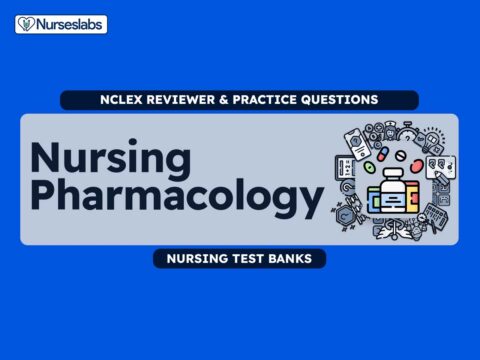



























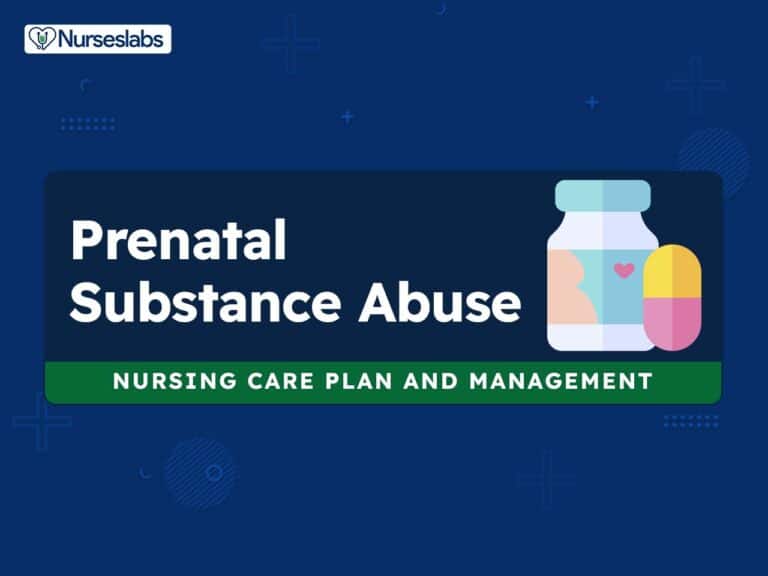


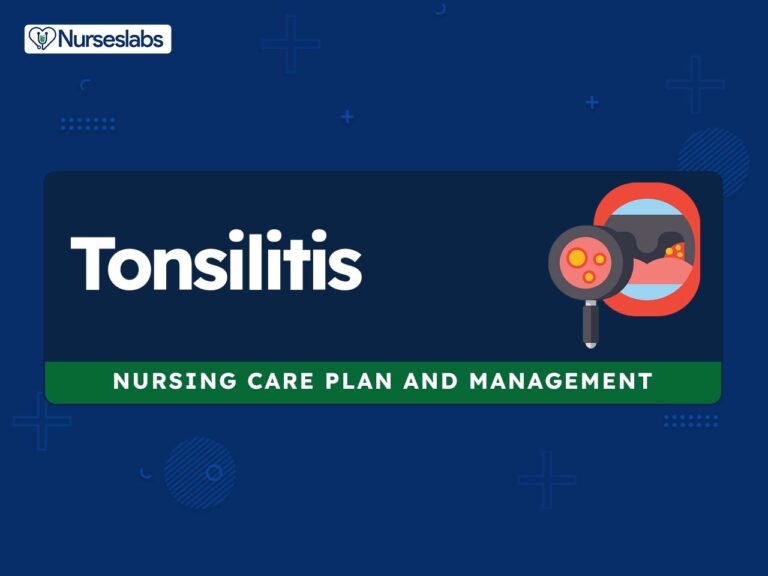
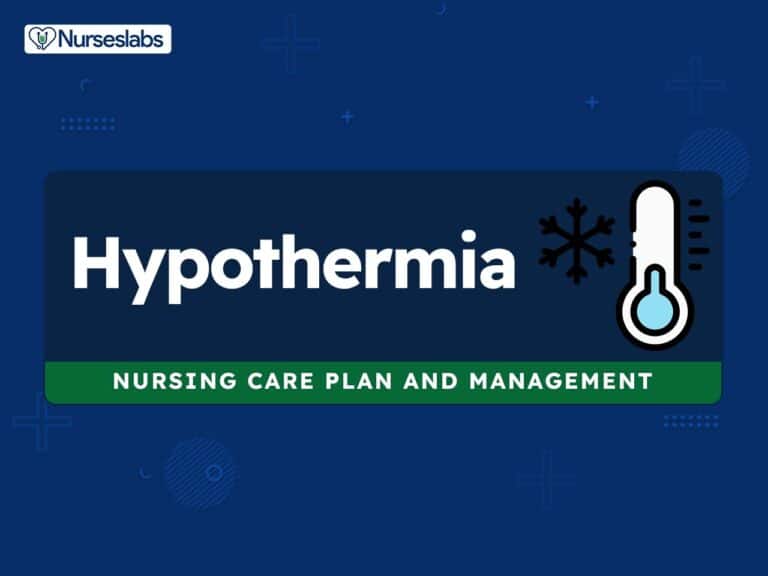
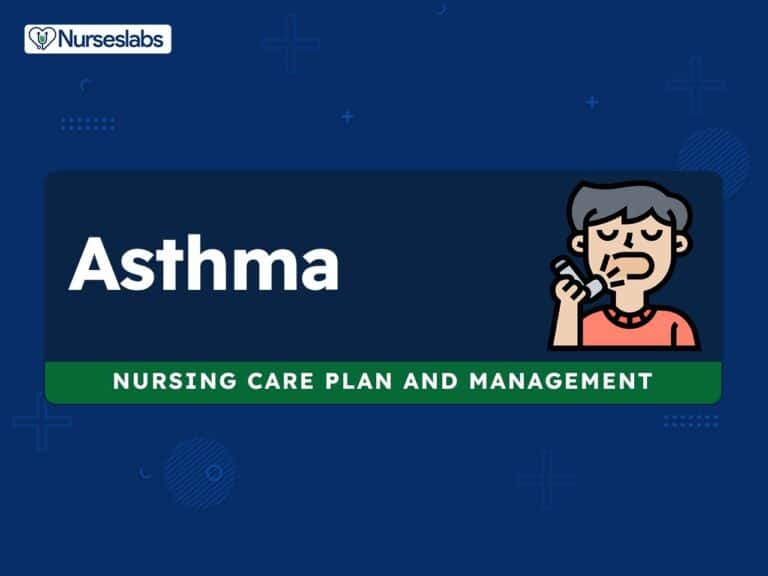
Leave a Comment